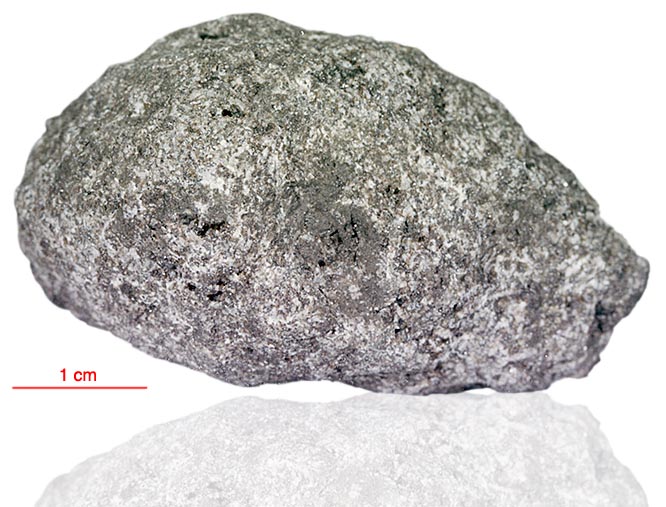
Fact sheet
71557 is a plagioclase-poikilitic ilmenite basalt that was collected as part of a rake sample. It is a coarse-grained basalt with large plates of plagioclase that poikilitically enclose crystals of pyroxene, olivine and ilmenite. Some areas have a sub-ophitic texture with intergrown plagioclase and pyroxene (rotation 2). Olivine grains are found in groups. Tranquillityite, armalcolite, Cr-spinel, rutile, zirconolite, baddeleyite, titanite, troilite, metallic iron and silica are present in minor amounts.
The sample weighed 40.35 grams before analysis and has not been dated.
Further details of this and other Apollo samples are here: http://curator.jsc.nasa.gov/lunar/
The dark patches are areas where the rock slice has lifted from the surface of the glass slide.
Apollo 17, the final manned landing mission, had two objectives: to obtain samples of ancient rocks from the lunar highlands and to look for evidence of younger volcanic activity on the valley floor.
This small Collection contains material deriving from both periods, including igneous rocks around 4.3 billion years old from the lunar highlands as well as younger volcanic samples dating from about 3.6 billion years ago.
Apollo 17 was launched on 7 December 1972.






